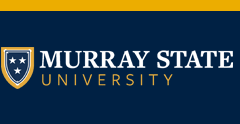Community Usage of Select Illicit and Prescribed Drugs and their Occurrence in the Clarks River
Academic Level at Time of Presentation
Senior
Major
Chemistry
Minor
Agriculture
List all Project Mentors & Advisor(s)
Bikram Subedi
Presentation Format
Poster Presentation
Abstract/Description
Drug abuse is considered a national epidemic in many countries including the USA and is associated with impaired socio-economic loss and adverse public health. Wastewater based epidemiology (WBE) is a cost-effective, comprehensive, and a non-invasive technique capable of determining semi-real-time community usage of drugs utilizing the concentration of drug residues in wastewater, wastewater inflow, and the population served by the centralized wastewater treatment plant. An analytical method capable of simultaneous analysis of 10 illicit drugs, 19 prescribed drugs, and their 7 metabolites was developed and validated. Wastewater influent, effluent, immediate receiving water (Bee Creek), and the Clarks River water were sampled for seven consecutive days in Murray, KY. Samples were extracted and being analyzed using liquid chromatography-triple quadrupole tandem mass spectrometer (LC‒MS/MS). The limit of quantitation of drug residues were 10 ng/L to 400 ng/L. Triplicate spiking recoveries of drug residues in wastewater and river water ranged from 58±8.3% (oxycodone) to 108±7.2% (venlafaxine).
Affiliations
General Posters Session--ONLY, Sigma Xi Poster Competition--ONLY
Community Usage of Select Illicit and Prescribed Drugs and their Occurrence in the Clarks River
Drug abuse is considered a national epidemic in many countries including the USA and is associated with impaired socio-economic loss and adverse public health. Wastewater based epidemiology (WBE) is a cost-effective, comprehensive, and a non-invasive technique capable of determining semi-real-time community usage of drugs utilizing the concentration of drug residues in wastewater, wastewater inflow, and the population served by the centralized wastewater treatment plant. An analytical method capable of simultaneous analysis of 10 illicit drugs, 19 prescribed drugs, and their 7 metabolites was developed and validated. Wastewater influent, effluent, immediate receiving water (Bee Creek), and the Clarks River water were sampled for seven consecutive days in Murray, KY. Samples were extracted and being analyzed using liquid chromatography-triple quadrupole tandem mass spectrometer (LC‒MS/MS). The limit of quantitation of drug residues were 10 ng/L to 400 ng/L. Triplicate spiking recoveries of drug residues in wastewater and river water ranged from 58±8.3% (oxycodone) to 108±7.2% (venlafaxine).


